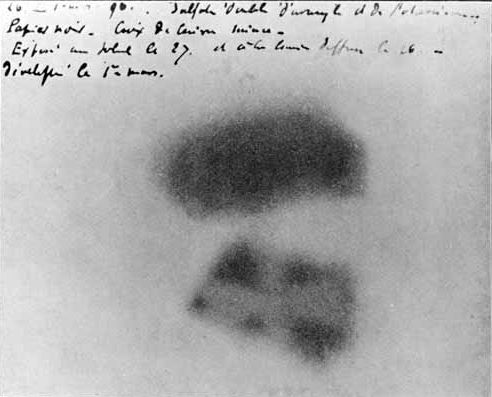

علم الكيمياء

تاريخ الكيمياء والعلماء المشاهير

التحاضير والتجارب الكيميائية

المخاطر والوقاية في الكيمياء

اخرى

مقالات متنوعة في علم الكيمياء

كيمياء عامة


الكيمياء التحليلية

مواضيع عامة في الكيمياء التحليلية

التحليل النوعي والكمي

التحليل الآلي (الطيفي)

طرق الفصل والتنقية


الكيمياء الحياتية

مواضيع عامة في الكيمياء الحياتية

الكاربوهيدرات

الاحماض الامينية والبروتينات

الانزيمات

الدهون

الاحماض النووية

الفيتامينات والمرافقات الانزيمية

الهرمونات


الكيمياء العضوية

مواضيع عامة في الكيمياء العضوية

الهايدروكاربونات

المركبات الوسطية وميكانيكيات التفاعلات العضوية

التشخيص العضوي

تجارب وتفاعلات في الكيمياء العضوية


الكيمياء الفيزيائية

مواضيع عامة في الكيمياء الفيزيائية

الكيمياء الحرارية

حركية التفاعلات الكيميائية

الكيمياء الكهربائية


الكيمياء اللاعضوية

مواضيع عامة في الكيمياء اللاعضوية

الجدول الدوري وخواص العناصر

نظريات التآصر الكيميائي

كيمياء العناصر الانتقالية ومركباتها المعقدة


مواضيع اخرى في الكيمياء

كيمياء النانو

الكيمياء السريرية

الكيمياء الطبية والدوائية

كيمياء الاغذية والنواتج الطبيعية

الكيمياء الجنائية


الكيمياء الصناعية

البترو كيمياويات

الكيمياء الخضراء

كيمياء البيئة

كيمياء البوليمرات

مواضيع عامة في الكيمياء الصناعية

الكيمياء الاشعاعية والنووية
The Discovery of Radioactivity
المؤلف:
LibreTexts Project
المصدر:
................
الجزء والصفحة:
.................
31-8-2020
1667
The Discovery of Radioactivity
No one could have known in the 1800's that the discovery of the fascinating science and art form of photography would eventually lead to the splitting of the atom. The basis of photography is the fact that visible light causes certain chemical reactions. If the chemicals are spread thinly on a surface but protected from light by a covering, no reaction occurs. When the covering is removed, however, light acting on the chemicals causes them to darken. With millions of cameras in use today we do not think of it as a strange phenomenon, but at the time of its discovery photography was a strange and wonderful thing.
Even stranger was the discovery by Roentgen, that radiation other than visible light could expose photographic film. He found that film wrapped in dark paper would react when x-rays went through the paper and struck the film.

Figure 1 : Image of Becquerel's photographic plate which has been fogged by exposure to radiation from a uranium salt. The shadow of a metal Maltese Cross placed between the plate and the uranium salt is clearly visible (Public Domain).
When Becquerel heard about Roentgen's discovery, he wondered if his fluorescent minerals would give the same x-rays. Becquerel placed some of his rock crystals on top of a well-covered photographic plate and sat them in the sunlight. The sunlight made the crystals glow with a bright fluorescent light, but when Becquerel developed the film he was very disappointed. He found that only one of his minerals, a uranium salt, had fogged the photographic plate. He decided to try again, and this time, to leave them out in the sun for a longer period of time. Fortunately, the weather didn't cooperate and Becquerel had to leave the crystals and film stored in a drawer for several cloudy days. Before continuing his experiments, Becquerel decided to check one of the photographic plates to make sure the chemicals were still good. To his amazement, he found that the plate had been exposed in spots where it had been near the uranium containing rocks and some of these rocks had not been exposed to sunlight at all. In later experiments, Becquerel confirmed that the radiation from the uranium had no connection with light or fluorescence, but the amount of radiation was directly proportional to the concentration of uranium in the rock. Becquerel had discovered radioactivity.
 الاكثر قراءة في الكيمياء الاشعاعية والنووية
الاكثر قراءة في الكيمياء الاشعاعية والنووية
 اخر الاخبار
اخر الاخبار
اخبار العتبة العباسية المقدسة

الآخبار الصحية















 قسم الشؤون الفكرية يصدر كتاباً يوثق تاريخ السدانة في العتبة العباسية المقدسة
قسم الشؤون الفكرية يصدر كتاباً يوثق تاريخ السدانة في العتبة العباسية المقدسة "المهمة".. إصدار قصصي يوثّق القصص الفائزة في مسابقة فتوى الدفاع المقدسة للقصة القصيرة
"المهمة".. إصدار قصصي يوثّق القصص الفائزة في مسابقة فتوى الدفاع المقدسة للقصة القصيرة (نوافذ).. إصدار أدبي يوثق القصص الفائزة في مسابقة الإمام العسكري (عليه السلام)
(نوافذ).. إصدار أدبي يوثق القصص الفائزة في مسابقة الإمام العسكري (عليه السلام)


















